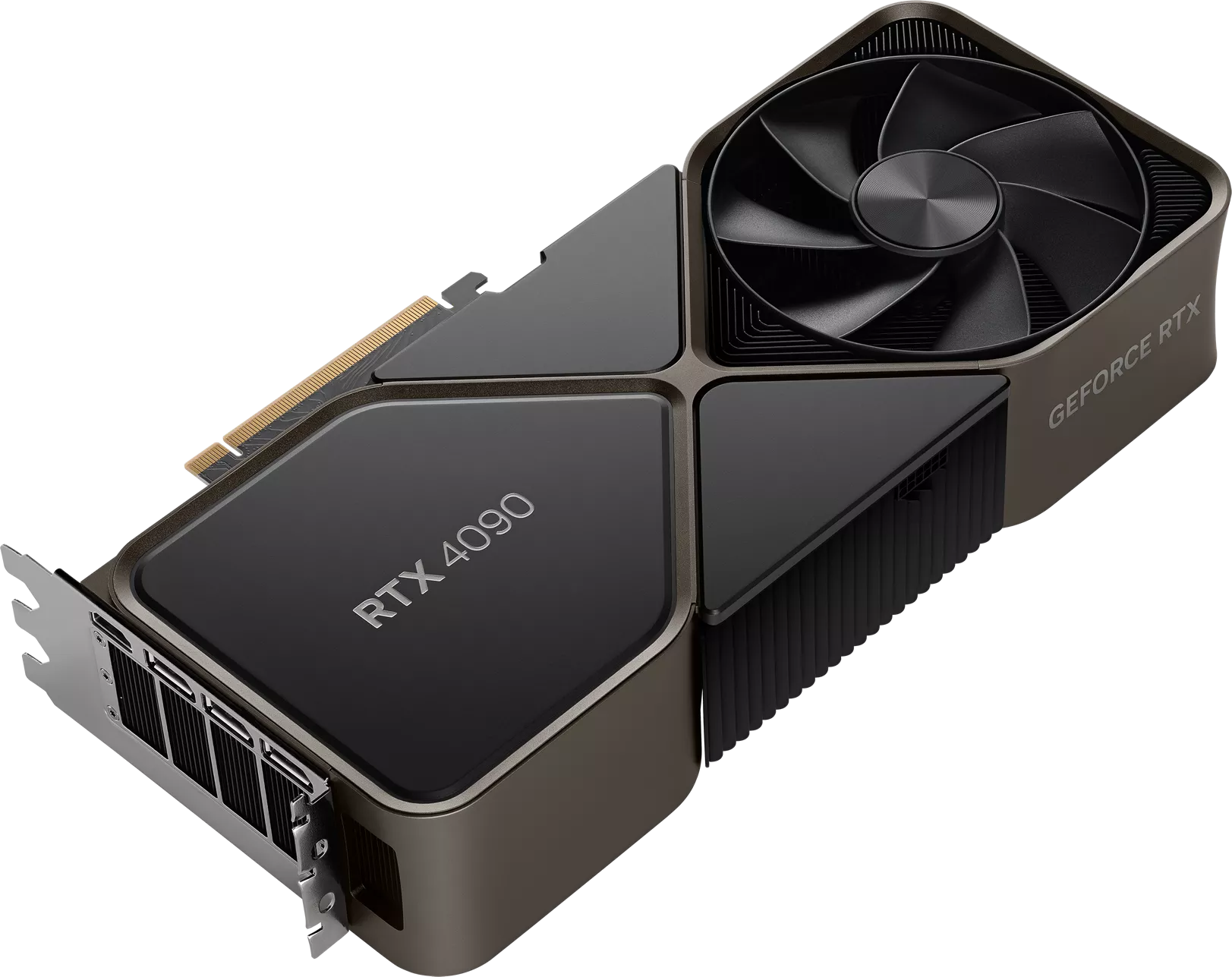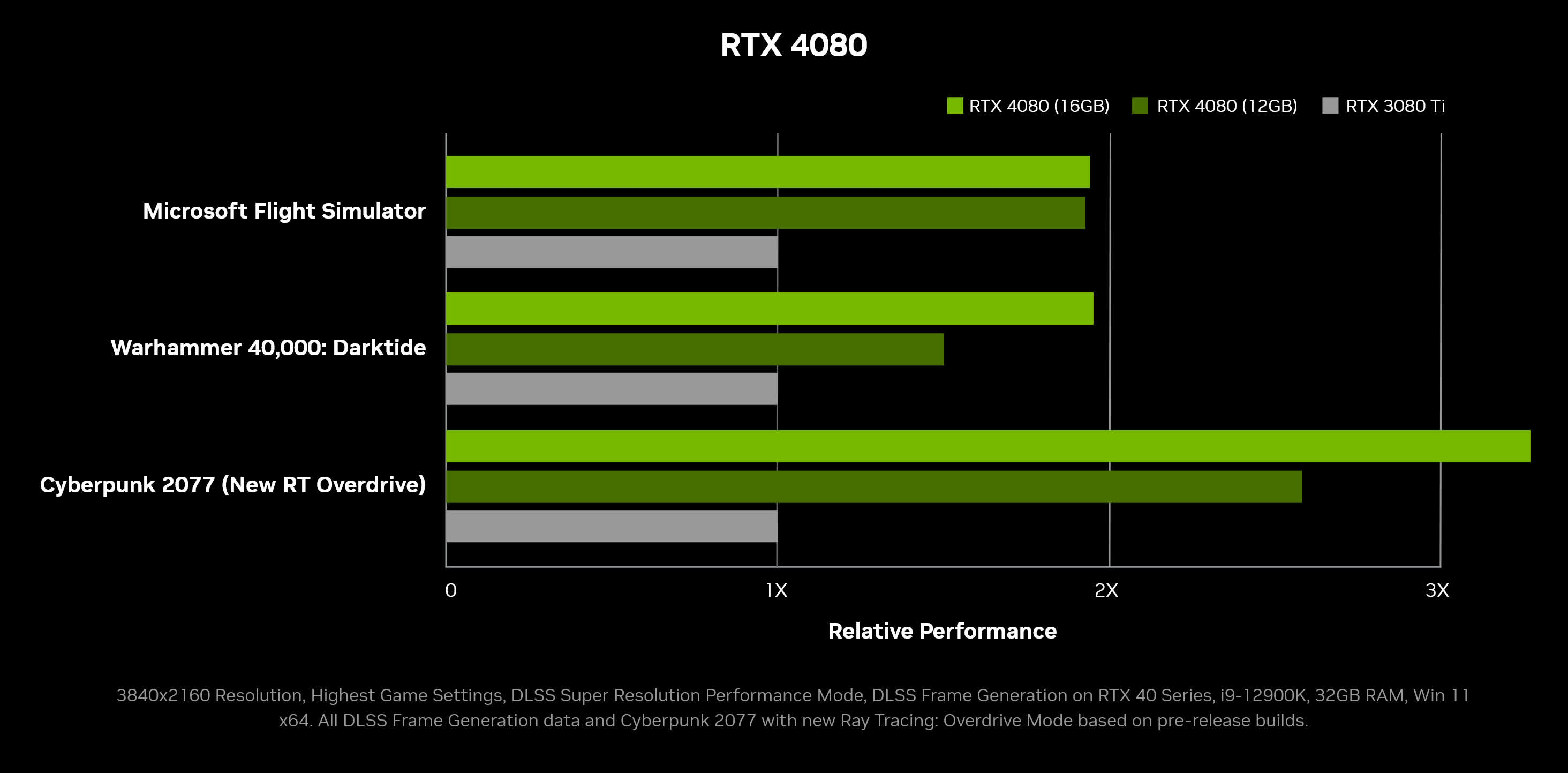Highly anticipated: Nvidia has officially unveiled its next-gen GeForce RTX 40 series GPUs based on the new Ada Lovelace architecture and headlined by the flagship RTX 4090. Ada Lovelace is built on TSMC's 4N process and will debut in new RTX 4090 and RTX 4080 graphics cards. The former packs 76 billion transistors, 16,384 CUDA cores, and 24GB of GDDR6X memory from Micron.
According to Nvidia, an RTX 4090 with DLSS 3 is up to four times faster than an RTX 3090 Ti running DLSS 2, and efficiency gains mean it sticks with the same 450W power consumption as the RTX 3090 Ti.
DLSS 3 is Nvidia's latest Deep Learning Super Sampling neural-graphics technology. It is built on DLSS Super Resolution, and adds Optical Multi Frame Generation to create entirely new frames to significantly boost frame rates.
Nvidia has a deeper dive available on its website, but you should know that the tech is exclusive to RTX 40 series GPUs and is coming to some of the most popular game engines including Unreal Engine and Unity. More than 35 games and apps are already in the pipeline with the first coming in October.
Nvidia has announced two flavors of the GeForce RTX 4080 GPU. The RTX 4080 12GB features 7,680 CUDA cores alongside 12GB of Micron GDDR6X memory and with DLSS 3 enabled (vs DLSS 2), it's claimed to be faster than the RTX 3090 Ti – it will set you back $899.
A higher-spec version with 9,728 CUDA cores and 16GB of GDDR6X memory will also be available, albeit for a bit more coin at a hefty $1,199.
Some feature and architectural highlights include:
- Streaming multiprocessors with up to 83 teraflops of shader power --- 2x over the previous generation.
- Third-generation RT Cores with up to 191 effective ray-tracing teraflops --- 2.8x over the previous generation.
- Fourth-generation Tensor Cores with up to 1.32 Tensor petaflops --- 5x over the previous generation using FP8 acceleration.
- Shader Execution Reordering (SER) that improves execution efficiency by rescheduling shading workloads on the fly to better utilize the GPU resources. As significant an innovation as out-of-order execution was for CPUs, SER improves ray-tracing performance up to 3x and in-game frame rates by up to 25%.
- Ada Optical Flow Accelerator with 2x faster performance allows DLSS 3 to predict movement in a scene, enabling the neural network to boost frame rates while maintaining image quality.
- Architectural improvements tightly coupled with custom TSMC 4N process technology results in an up to 2x leap in power efficiency.
- Dual Nvidia Encoders (NVENC) cut export times by up to half and feature AV1 support. The NVENC AV1 encode is being adopted by OBS, Blackmagic Design DaVinci Resolve, Discord and more.
The flagship RTX 4090 launches on October 12 starting at $1,599, with the RTX 4080 12GB and 16GB variants landing sometime in November from $899 and $1,199, respectively. All will be available from add-in partners including Asus, Gigabyte, MSI and Zotac, in both stock-clocked and factory overclocked variants.






